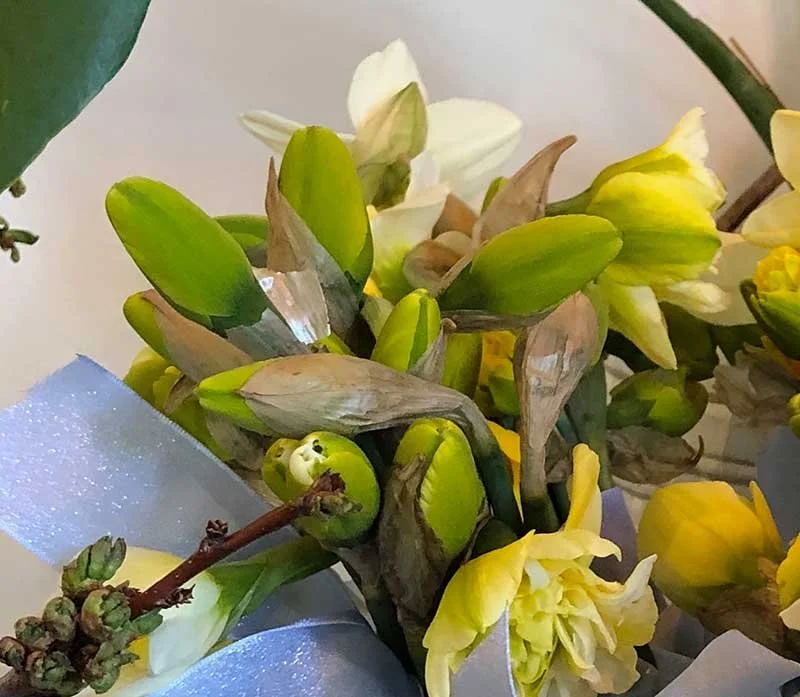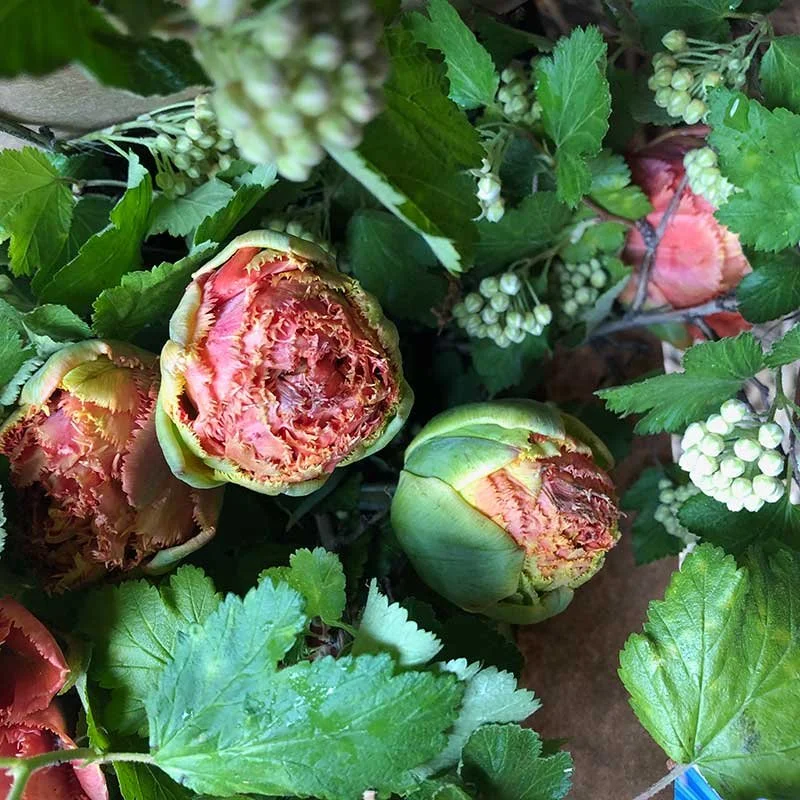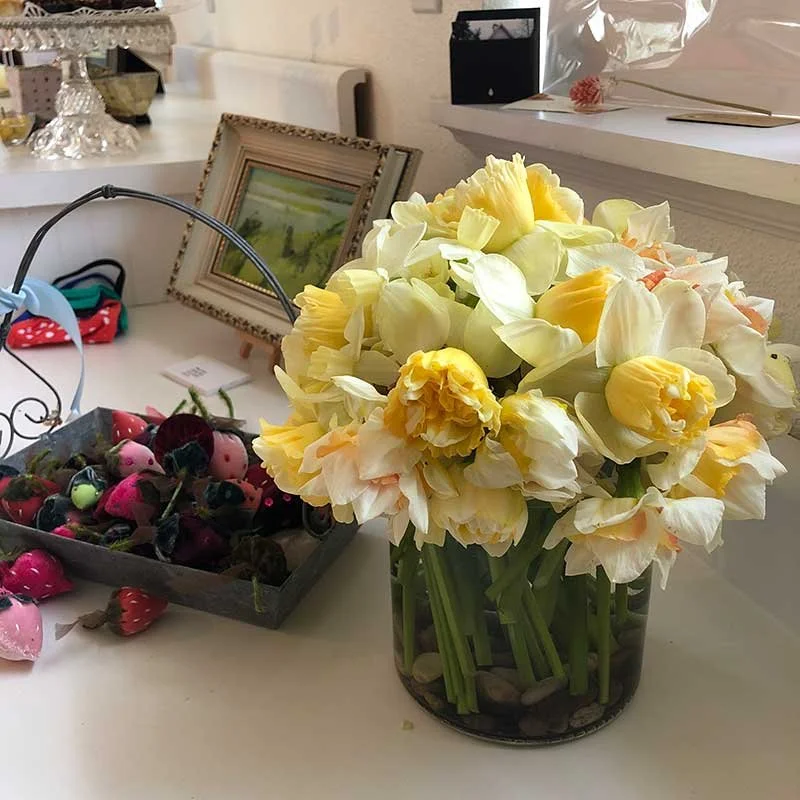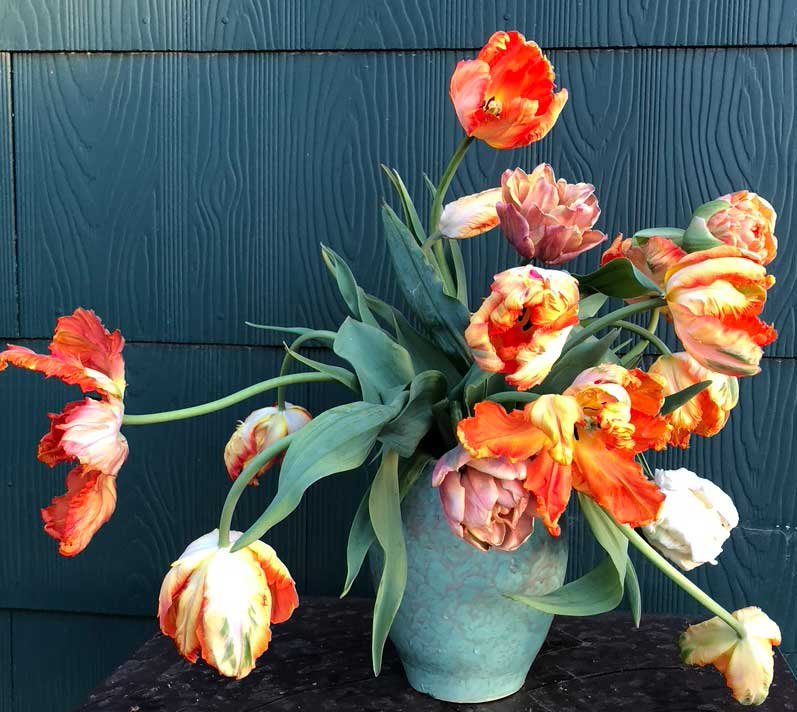How to make the most of our favorite spring flowers
There is something about being deprived that makes us appreciate life so much more. Food after fasting, sleep when we are exhausted, spring after winter. You get the idea. Spring flowers are gorgeous anyway, but after a long, cold, and dark winter, all that life and color restores us all in a way that no other flowers can.
When the first fancy narcissus bloom in the spring and open the new season, I could just cry. They are that beautiful. We all love spring flowers and very rightly want to completely fill our homes with them. But, they can be really tricky to work with because of little quirks that make them both special and different from summer flowers.
I want to share my tips and tricks for success with two springtime favorites: narcissus (daffodils) and tulips.
Charming Beauty tulips right out of the field
1. Harvest at the right time for the longest vase life
Unlike most summer flowers that we cut when they are fully open, spring flowers can be cut just as they are barely starting to unfurl. If you catch them early, you’ll have the fun of watching them open and change in the vase and you’ll buy yourself a few extra days of vase life
Narcissus, which you might know as daffodils, go through a few stages before they fully bloom: first they send up a green flower spike, then the head of the spike will nod over – we call this the “gooseneck” stage, eventually a papery outer covering forms which we call the “cornhusk” stage. That’s when you want to cut them! They may even have just the beginnings of their petals poking out of the cornhusk. At this stage, they are very easy to transport for gift giving and they will open beautifully in the vase.
Cut daffodils just as they start to emerge from their corn husk like skin
Tulips can and should be cut very early as well for the longest possible time in your vase. Single varieties, which is the one you most commonly see, should be cut at what is called the “lipstick phase.” The bud will be tight and mostly green with just the beginnings of color forming at the tips. If you start at the lipstick stage, the blooms will color up beautifully and unfurl before your eyes in the warmth of your home. You should be able to enjoy them for a good 10 days or more.
Single tulips in the “lipstick stage” when they are just starting to show color. Pick them when they look like this.
If you have fancy doubles or peony types, they need just a bit more time in the field. We have found that cutting these divas at the lipstick stage meant they did not always open. I leave them in the field until the heads are just starting to reveal the first true petals.
Double tulips at the right harvest stage - they will unfurl in the vase
2 Outsmart narcissus to make them last
Many people tell me that they’ve been frustrated with narcissus (daffodils) because they don’t last very long in the vase. It doesn’t have to be that way. Once you understand their little quirks, you can enjoy them for a week or more.
When you first cut a narcissus stem, it will ooze a snotty sticky sap. That goo is protective for the plant and is actually mildly toxic. I sometimes wonder if it is the reason deer leave narcissus alone. If you cut the stems and put them in a vase, they will leave their icky substance into the water and kill themselves and any other flowers in the vase in no time.
Never fear, there is a trick. Cut the stems to the length you want, put them in cool water and let them sit for about 4 hours. By that point, the stem ends will have calloused over and you can dump out the toxic water, rinse the stems and replace with clean water. Now your blooms will last for a long time. Word to the wise though, if you cut the stems again, they will begin oozing their sap all over and you will need to change out that water once more.
Their little self protective/self destructive habit is why you so often see arrangements of narcissus all on their own. That doesn’t stop me though. I still love to mix them with all the other spring favorites. I just stay vigilant to make sure everyone has clean water. I’ll hold my arrangement steady, dump all the water, and refresh more than once. Using that method, I’ve had spring arrangements with narcissus last almost 2 weeks and you can too.
Narcissus are gorgeous all on their own. this arrangement takes advantage of a glass vase for added line and texture.
3 Tulips are going to tulip and you should just let them
One of the remarkable things about tulips is that they will continue to stretch and grow in the vase after you have cut them. If you have a design in mind for them, it is a good idea to snip them a bit shorter than you want them, snuggle them into your arrangement, and just let them grow into place.
Alternatively, it is fun to put them in a vase by themselves and just let them go wild. As they stretch, they will snake around and create all kinds of beautiful organic lines with their stems. Just let them go and enjoy the show. When we bring flowers into the house, we are really looking to connect with some of the wildness of nature and tulips always deliver.
Tulips bring a sense of wild movement that is wonderful to bring into our homes
Now that you know how to make the most of them, I hope that you celebrate spring and fully enjoy this fleeting season with some of the most beautiful flowers of the year.





